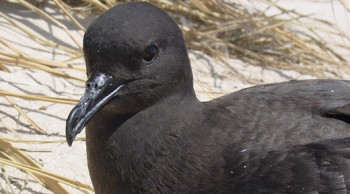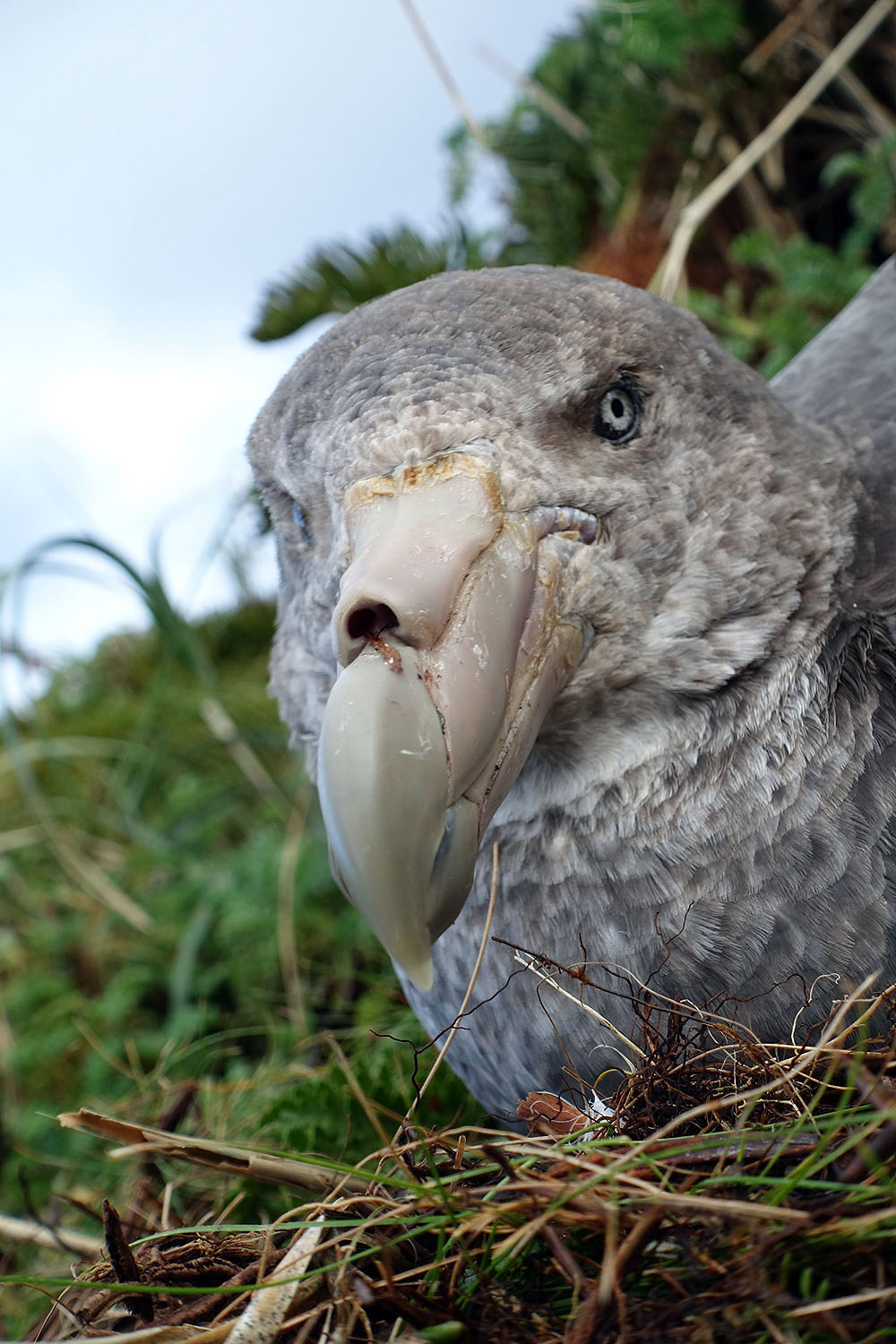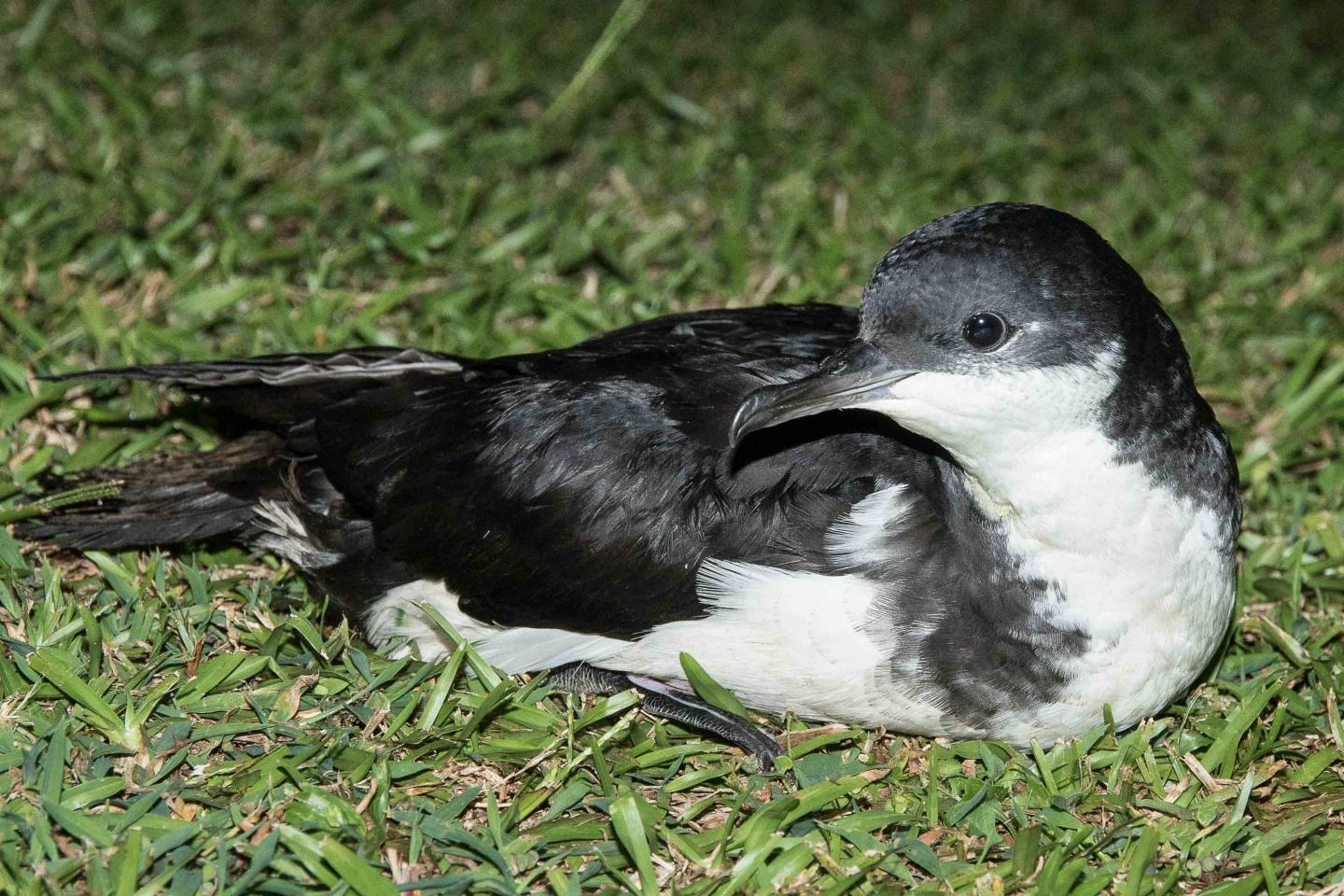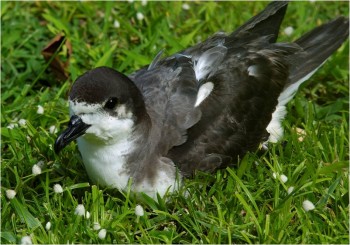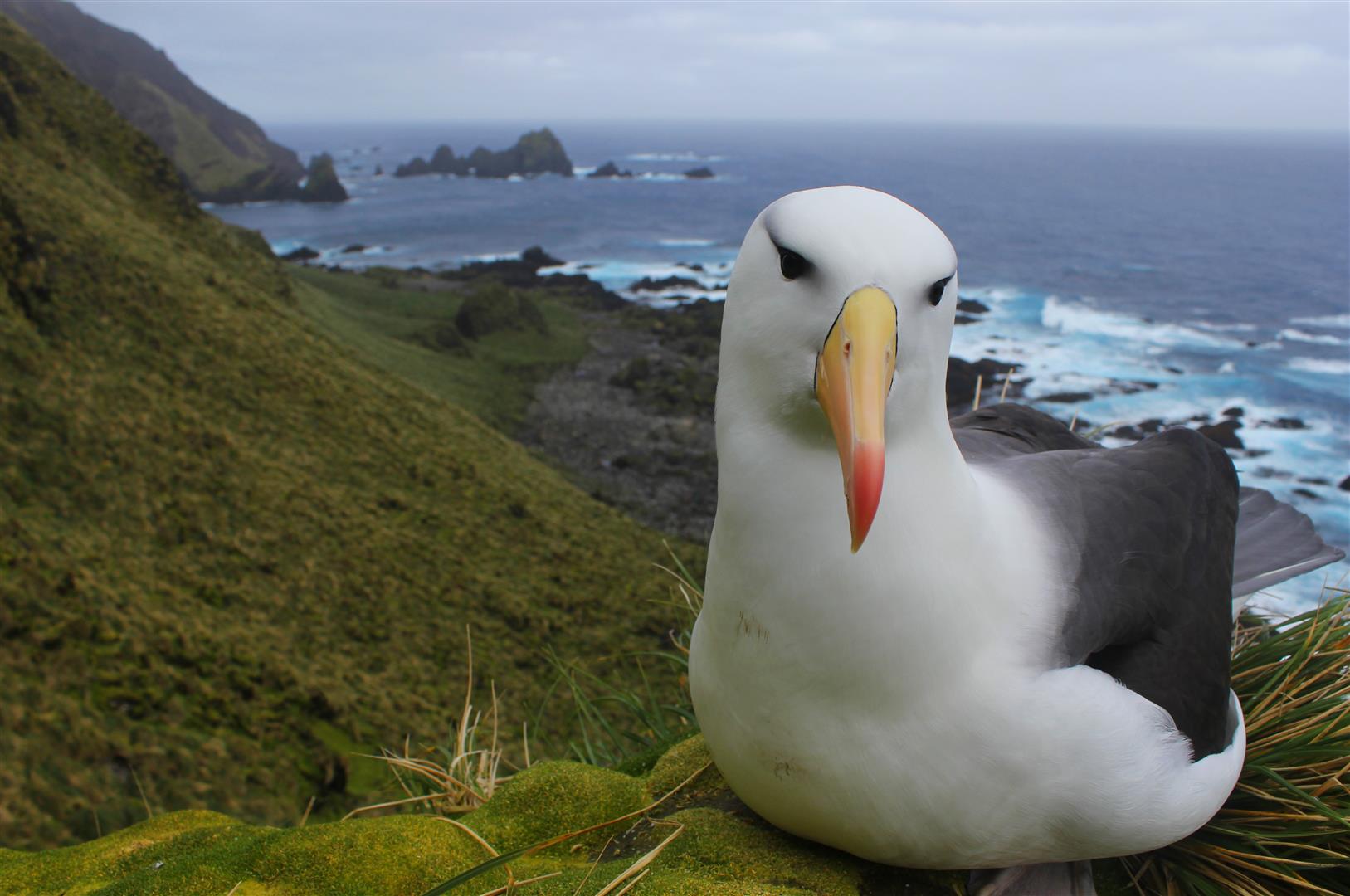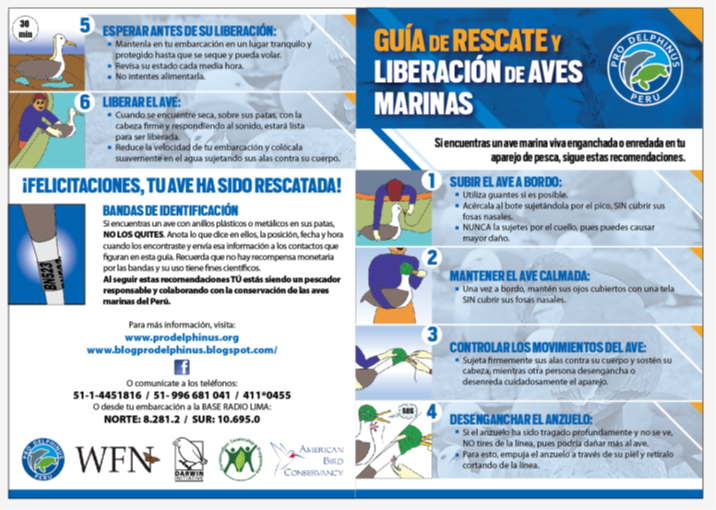
Infographic in Spanish by ProDelphinus Peru describes the safe handling and release of bycaught seabirds
The environmental NGO ProDelphinus Peru has produced six videos for Spanish speakers that describe procedures for the safe handling and releasing of marine megafauna that get incidentally caught by fisheries in the south-east Pacific Ocean. The animal groups covered in six separate videos are marine mammals, fish (sharks and rays), turtles and seabirds. The video for seabirds is intended to decrease the post-release mortality after a bycatch event.
Este video fue preparado como una guia de buenas practicas para la manipulacion y liberacion de fauna marina de pesqueria incidental. El video sobre aves marinas busca aumentar la sobrevivencia de las aves luego de la captura y posterior liberacion. Este y otros materiales similares fueron preparados por ProDelphinus Peru, con el apoyo de National Fish and Wildlife Foundation, para promover pesquerias sostenibles en el Pacifico Oriental.
Joanna Alfaro of ProDelphinus Peru writes to ACAP Latest News:
“I am also attaching the link to a Guide for Assessing Small-scale Fisheries. This guide compiles information from our own experience in Peru, from assessing these fisheries, to identifying potential solutions. We hope it may be useful for Spanish-speaking countries. I am also sharing a Guide for Best Practices in Sustainable Small-scale Fisheries that includes information about improving commercialization of fish, reducing pollution, reporting bycatch, technologies to improve fisheries, and COVID health measures for safe fishing.”
Click here for both these (and other) guides, including the infographic featured above.
ProDelphinus Peru has produced the various materials with the support of the National Fish and Wildlife Foundation.
With thanks to Joanna Alfaro Shigueto, ProDelphinus Peru.
John Cooper, ACAP Information Officer, 30 March 2021

 English
English  Français
Français  Español
Español 